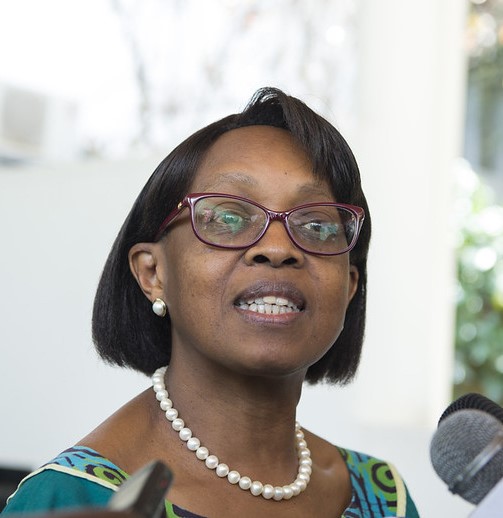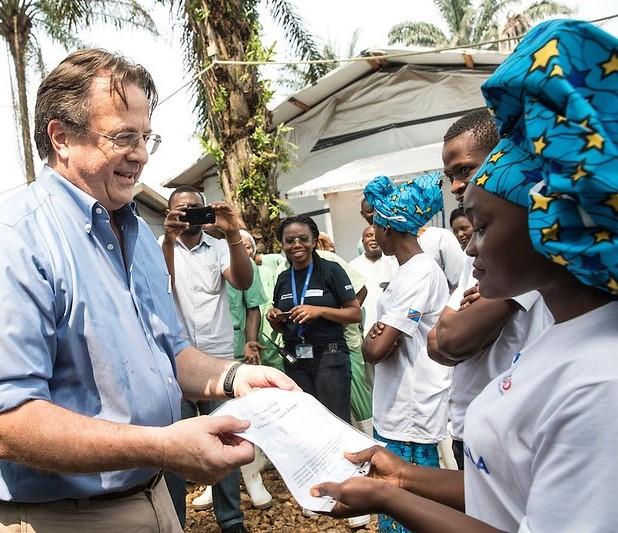Today marks the end of the 11th Ebola virus outbreak in the Democratic Republic of the Congo (DRC) after causing 119 confirmed cases, 11 probable ones (130 cases total), and 55 deaths (42.3% of all cases), according to the World Health Organization (WHO).
Since beginning in the country's western province of Equateur on Jun 1, the outbreak affected 13 of the province's 18 health zones in both urban and remote communities.
While experimental treatments have been used in the past, the US Food and Drug Administration (FDA) approved the first one, Inmazeb, only on Oct 14. The first FDA-approved vaccine, Ervebo, made by Merck, was announced in December 2019 and has been used in the past three DRC outbreaks.
According to the WHO, an Ebola outbreak is over when 42 days (twice the virus' incubation period) have passed since the last survivor tests positive. Health officials will continue to watch for cases, as survivors can relapse and/or sexually transmit the virus for up to 6 months.
Better treatments, technology available
To combat infection spread, high-risk populations began receiving a cumulative 40,000 vaccine doses just 4 days after the outbreak's announcement, and responders provided health education information to more than 574,000 households and 3 million people. Good will around international aide was dampened when claims of sexual abuse allegedly perpetrated by WHO employees came to light in September.
 In today's WHO press release, Matshidiso Moeti, MD, WHO regional director of Africa (at left), says, "Overcoming one of the world’s most dangerous pathogens in remote and hard to access communities demonstrates what is possible when science and solidarity come together.
In today's WHO press release, Matshidiso Moeti, MD, WHO regional director of Africa (at left), says, "Overcoming one of the world’s most dangerous pathogens in remote and hard to access communities demonstrates what is possible when science and solidarity come together.
"The technology used to keep the Ebola vaccine at super-cold temperatures will be helpful when bringing a COVID-19 vaccine to Africa. Tackling Ebola in parallel with COVID-19 hasn’t been easy, but much of the expertise we've built in one disease is transferrable to another and underlines the importance of investing in emergency preparedness and building local capacity."
The WHO adds that Artek freezers—which can keep a temperature of -80°C up to a week—were part of the cold chain used to transfer vaccines to hard-to-access areas or communities without electricity. (Ervebo, which was borne out of the 2014-16 outbreak in West Africa, needs to be stored at -80°C to -60°C.)
Local health workers trained during the country's prior two Ebola outbreaks assisted with vaccine distribution, and in all, about 90% of vaccinators were from local communities.
Short breather between recent DRC outbreaks
The 11th outbreak started just as the world's second-largest Ebola outbreak was ending in the DRC's eastern provinces of North Kivu, South Kivu, and Ituri.
After 22 months, the 10th Ebola virus outbreak had 3,470 confirmed or probable cases, 2,287 deaths (65.9% case mortality), and 1,171 survivors. During that outbreak, which ended this June, the PALM (PAmoja TuLinde Maisha) Trial led to FDA approval of Inmazeb. Through support of the US Biomedical Advanced Research and Development Authority, Inmazeb was distributed for free during the 11th outbreak.
Genetic sequencing proved that the 10th and 11th outbreaks—and the ninth and 11th, which both took place in the same province—were unrelated. The ninth Ebola outbreak covered a 3-month period in 2018, with 54 confirmed or probable cases and 33 (61.1%) deaths.
Ebola symptoms include fever, bleeding, kidney and liver complications, and low white blood cell and platelet counts. The disease often stems from contact with wild animals, but once a human is infected, it can be transferred through infected body fluids.

















